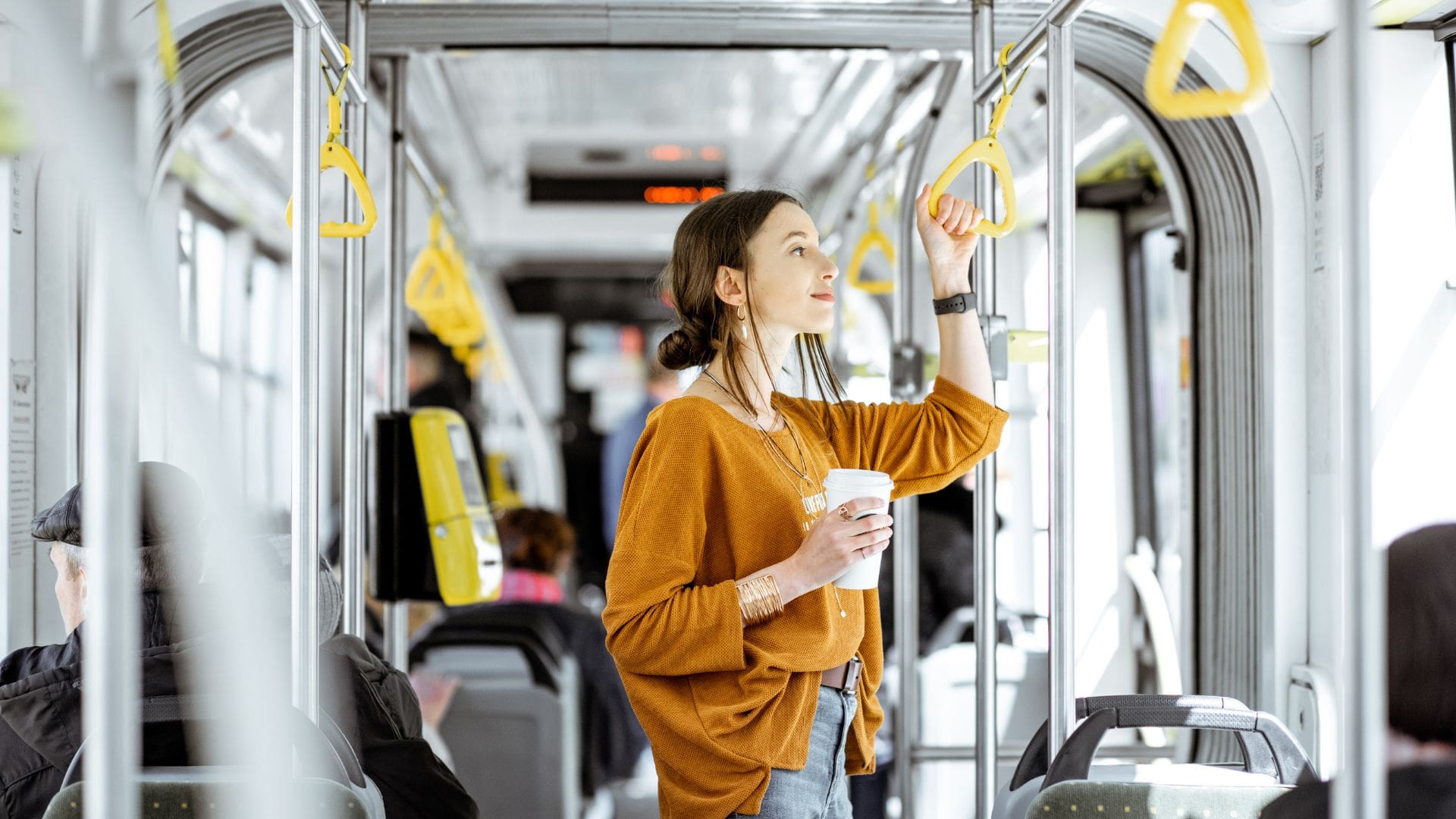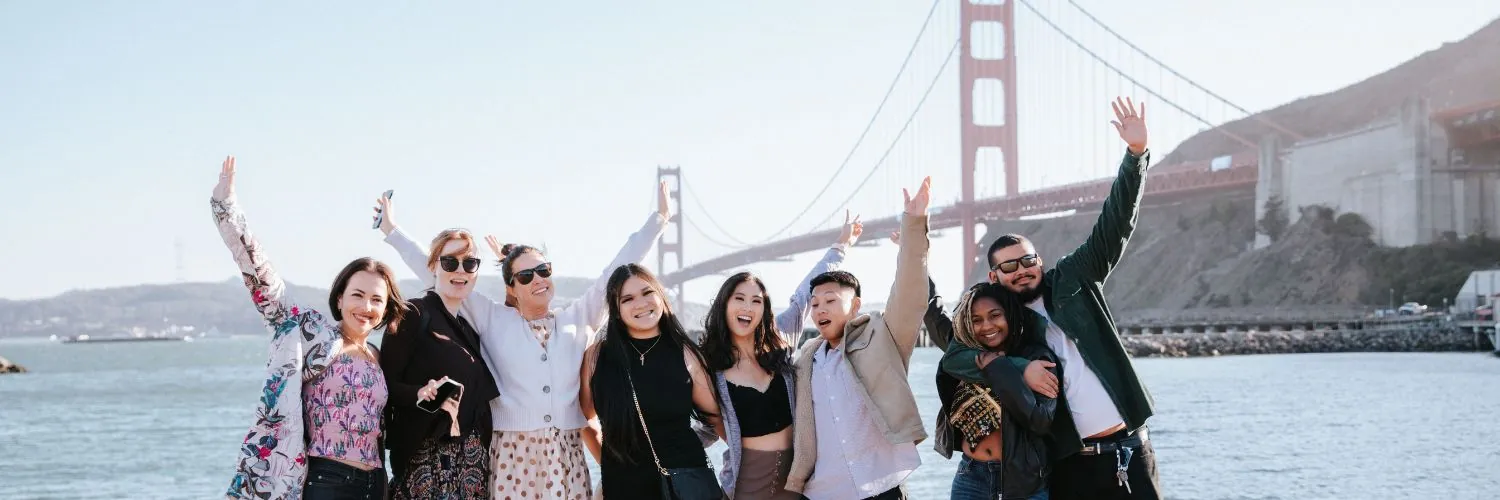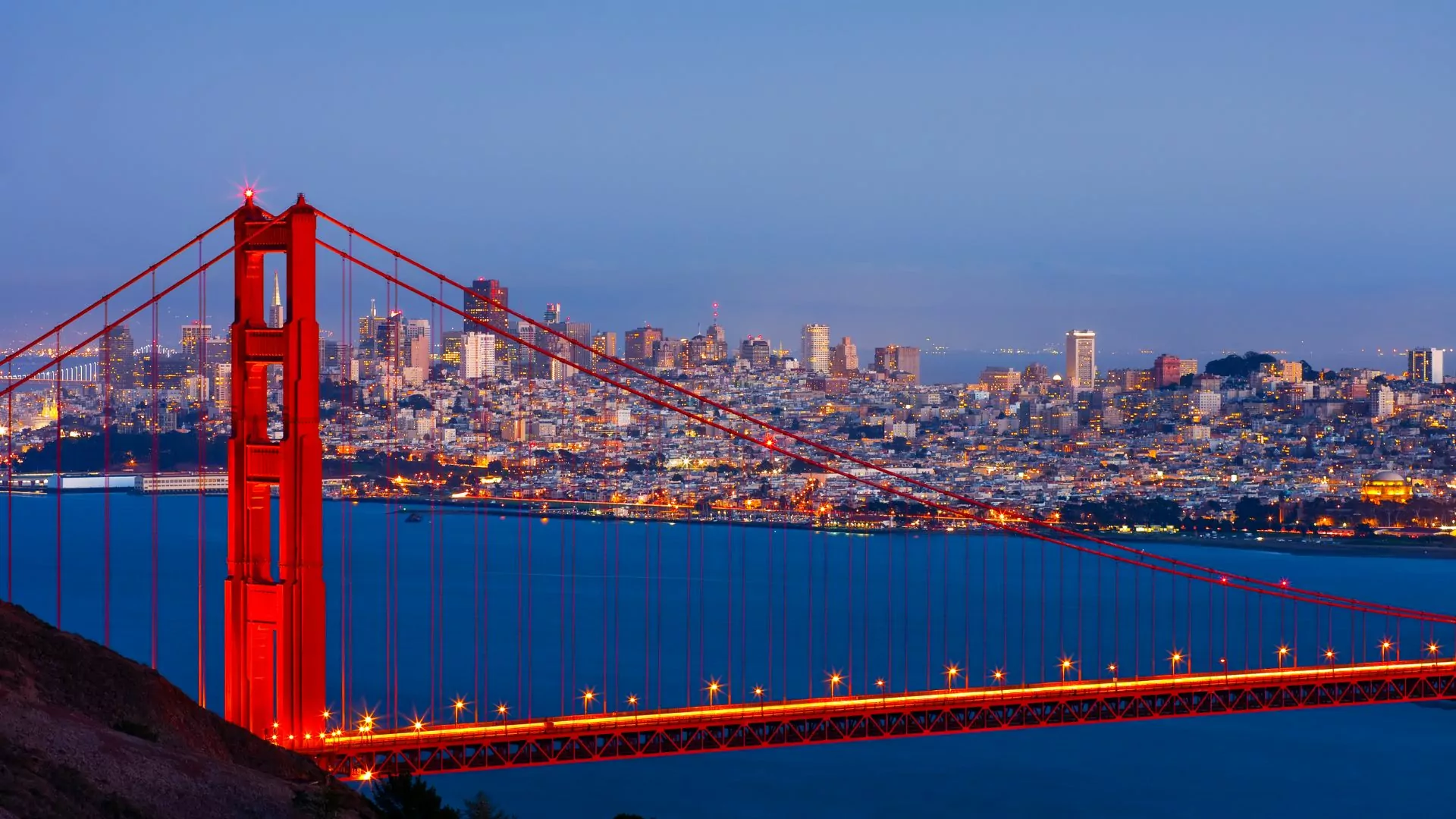-
San Francisco Public Transportation: Quick Guide
Welcome to San Francisco! If it’s your first time in San Francisco — and even if you’ve been before — you may be wondering how easy it is to get around.
San Francisco is relatively small — only 7 by 7 miles — and is surrounded by water on three sides, which makes getting around this city pretty easy. You can walk, bike, or rely on San Francisco’s public transportation network.
Before you take your first ride on public transport, it helps to get a sense of how big the network is and where it goes. Whether you plan to visit popular attractions like Fisherman’s Wharf or more distant locations like Muir Woods, San Francisco offers many ways to get around: buses, light rail, cable cars, streetcars, trolley coaches, BART, CalTrain, ferries, and more!
Knowing how to get around the Bay Area will also help you decide on the best areas of San Francisco to stay. So here’s an introduction to the San Francisco public transit system, so you can see where it will and won’t take you:
- Routes, Fees, and Travel Tips
- BART
- CalTrain
- Trolley coaches
- Hybrid buses
- All-electric buses
- Cable Cars
- MUNI Metro
- Historic Streetcars
- Ferries
- Conclusion
San Francisco Public Transportation: Routes, Fees, and Travel Tips
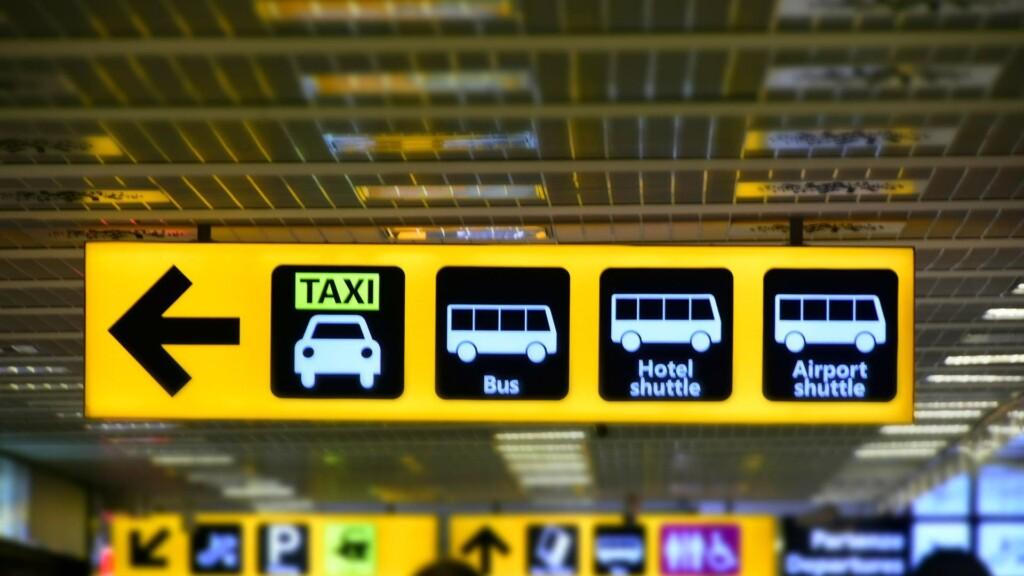
San Francisco’s public transportation system is a comprehensive network that will take you up and down the city’s many hills and even underneath the Bay! But it is a network, which means you’ll have to navigate multiple public transit methods, each with their own routes, timetables and payment options.
The good news is that San Francisco is rolling out a new contactless payment system that will allow you to tap on and off with your credit card (starting with BART). But for now, you’ll either need to buy a paper ticket, a Clipper Card, or download the MuniMobile app.
You can also pay with cash on some surface transport options, like trams and buses, but you’ll need exact change ($3) and you’ll save money if you use one of the other payment options.
If you’re only spending a few days or a weekend in San Francisco, consider getting a 1-day, 3-day, or 7-day Visitor Passport for unlimited rides.
Now, let’s take a closer look at each of these transport options:
BART
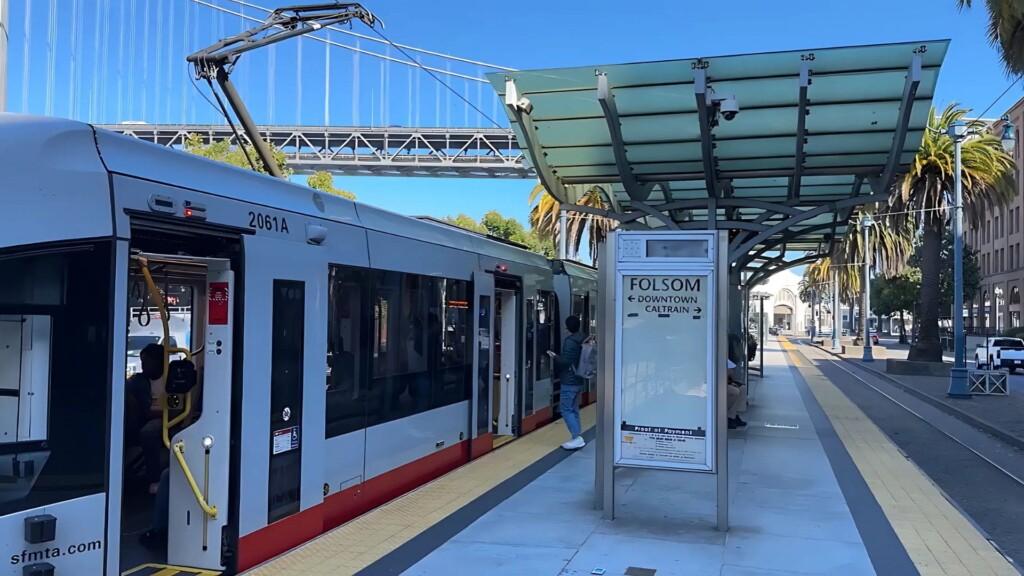
BART (Bay Area Rapid Transit) and Muni are the backbone of San Francisco’s public transportation system. The San Francisco Municipal Transit Authority (SFMTA or “Muni” as it’s called) controls buses, streetcars, cable cars, trolley coaches, and light rail lines (Muni Metro).
Muni also controls BART, a regional service that serves both the Peninsula and the East Bay. BART makes it easy to travel between San Francisco and nearby airports. You can get to San Francisco International Airport (SFO) in about 30 minutes with direct access to the terminal. To reach Oakland International Airport (OAK), take BART to the Coliseum Station, then hop on a quick shuttle to the airport. With frequent trains and reliable service, BART is a stress-free way to travel.
You can use your Clipper Card on all of these options. It will even work on the ferries that operate out of San Francisco, even though those are controlled by San Francisco Bay Area Water Emergency Transportation Authority (WETA).
CalTrain
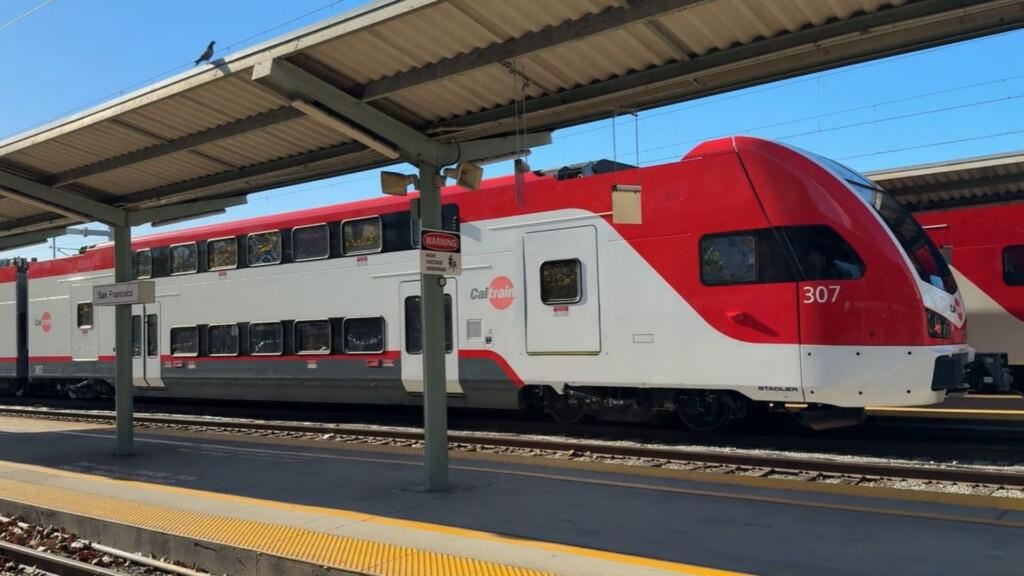
CalTrain is a regional heavy rail system that was first built in 1863 and was in regular use until the late 1940s, when car use expanded and fewer and fewer people chose the trains. Kept alive by government subsidies, the rail line reinvented itself as CalTrain in 1985.
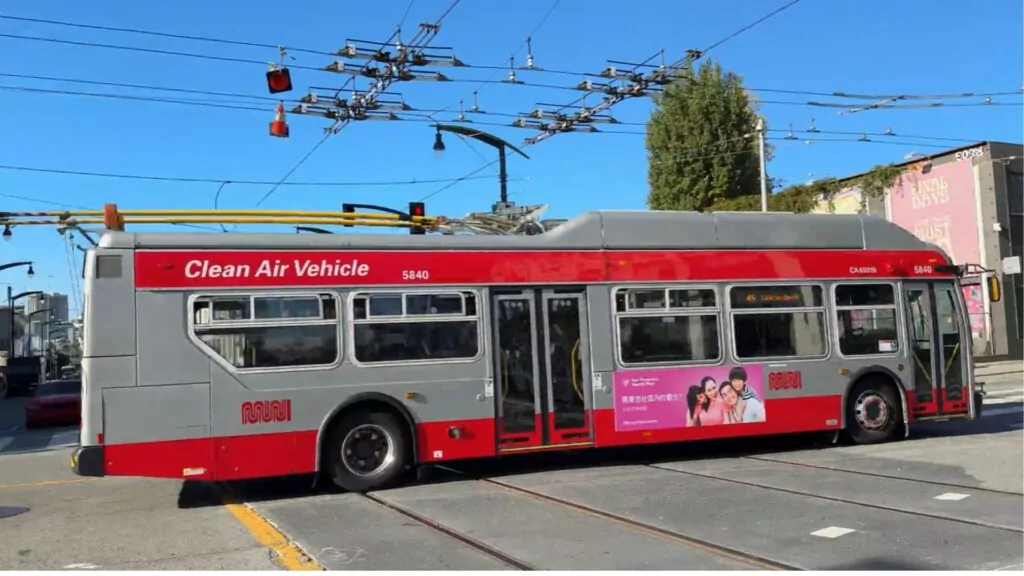
Caltrain is a commuter rail line connecting San Francisco to the Peninsula and South Bay, including cities like Palo Alto, San Jose, and Gilroy. It’s a reliable option for both daily commuters and travelers, offering clean, comfortable trains with free Wi-Fi. With frequent schedules and stops near major attractions, Caltrain is a convenient way to explore the Bay Area.
Trolleys
Trolleys are an essential part of San Francisco’s public transportation system, and are especially well-suited for navigating the city’s hilly terrain and dense urban areas. Their quiet operation and zero-emission design make them a sustainable and environmentally-friendly choice for commuters. Additionally, they provide a reliable alternative in neighborhoods where steep gradients make other modes of transport less efficient or feasible.
Buses
Muni operates about 550 diesel-electric buses. These have a classic “city bus” look, with frequent stops spread out over every square mile of the City.
Hybrid buses combine the power of diesel engines with electric propulsion, reducing fuel consumption and emissions compared to traditional diesel buses. With their widespread network, these buses provide a versatile and accessible transit option for residents and visitors, seamlessly connecting neighborhoods across San Francisco. Their adaptability makes them a vital component of the city’s commitment to sustainability and urban mobility.
Pretty soon, the electric trolleys won’t be the only fully-electric option: Muni recently announced a commitment to have an all-electric bus fleet by 2035, and starting in 2025, they’ll only buy all-electric buses.
Cable Cars

Nothing says San Francisco more than a cable car ride down a steep, narrow street with the Golden Gate Bridge in the distance! The cable cars run on three different lines — Powell/Hyde, Powell/Mason, and California Street — and are a one-of-a-kind way to navigate the City’s famous hills. A single ride costs $9 for adults, and you can pay with your Clipper Card or exact change.
MUNI Metro
In addition to buses and trolleys, San Francisco’s Muni has a light rail system called the Muni Metro. The Muni Metro has several lines (J, K, L, M, N, and T) that run both underground and at street level, making it easy to reach popular neighborhoods and attractions. The fare for these streetcars is the same as buses: $3 if you’re paying cash, or $2.85 if it’s on the Clipper Card. There are maps at each station, and all bus announcements are in four languages: English, Spanish, Cantonese, and Tagalog.
Historic streetcars
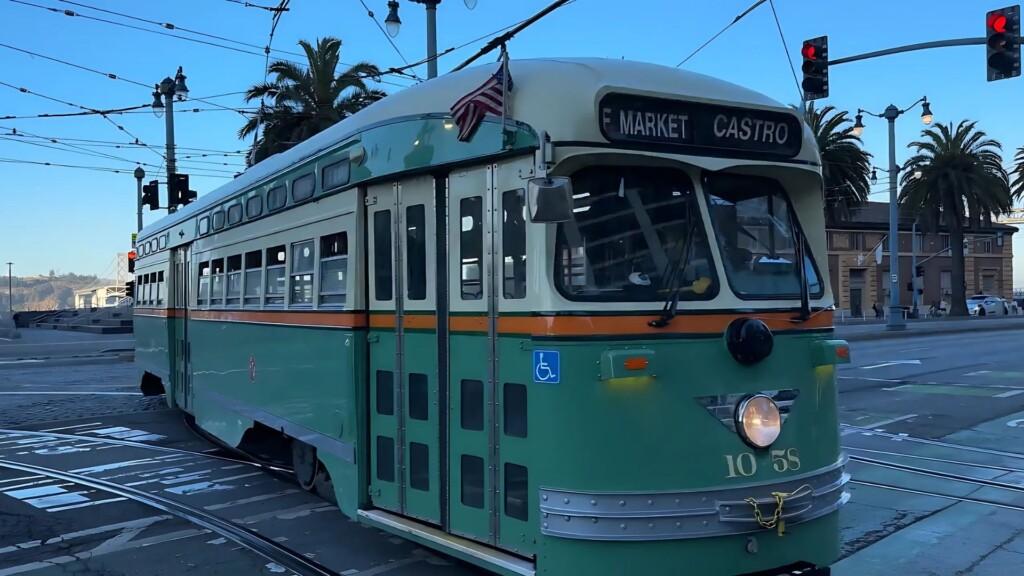
If you’ve ever wanted to ride a 100-year-old streetcar, San Francisco has just the experience for you! In 1979, San Francisco got its first historic cable car: a model-year 1954 tram from Hamburg, Germany. Now, Muni has a fleet of over 40 historic streetcars, some of them built as far back as 1912!
The historic lines only run on six routes: F – Market, E – Embarcadero, PH – Powell/Hyde, PM – Powell/Mason, CA – California St, and the only numbered one, 39 – Coit Tower. The fare for these is the same as the main streetcar system: $3 for cash, and $2.85 if you’re paying with Clipper.
Ferries
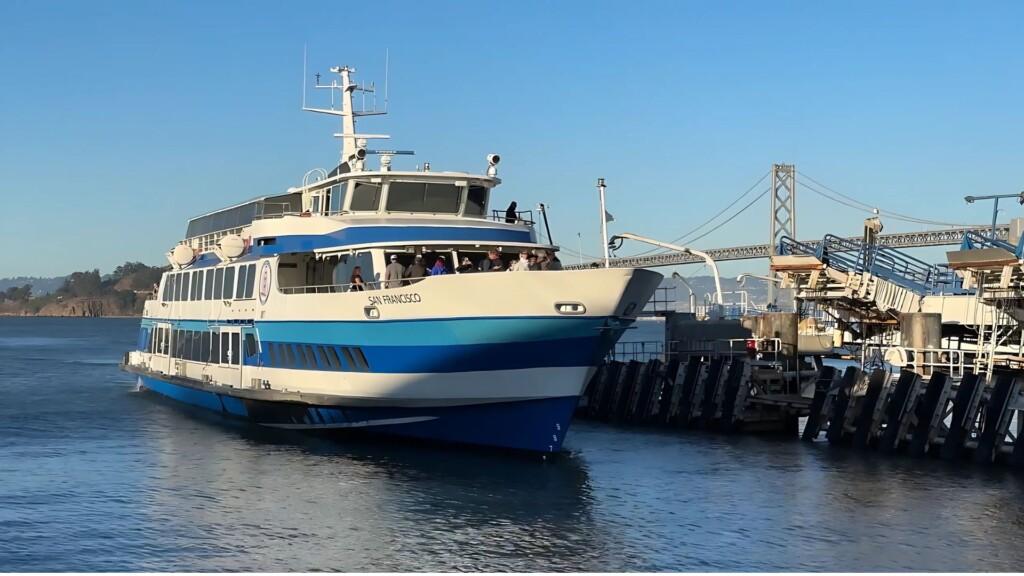
Even though you can’t ride them through San Francisco, the City’s ferries are great for getting to nearby places like Sausalito, Tiburon, and Oakland — with amazing views along the way! If you’re wondering how to get to Muir Woods from San Francisco, a ferry to Sausalito just might be the answer. You’ll also need to take a ferry if you want to visit Alcatraz Island.
Fares usually range from $5 to $13 depending on the route, and you can use a Clipper Card or grab a one-way ticket at the terminal. Be sure to bring some layers, because it can get windy out on the Bay!
Presidio GO Shuttle (Free)
The Presidio GO Shuttle is one of the only parts of San Francisco’s public transportation network that’s totally free. It offers free rides from Downtown SF to the Presidio daily, from 6 a.m. to 7 p.m., with a few stops downtown, and multiple stops around the Presidio. Whether you’re headed to Tunnel Tops Park for Golden Gate views, the Walt Disney Family Museum, or a Sunday picnic, this shuttle will get you there — at no cost to you!
Conclusion
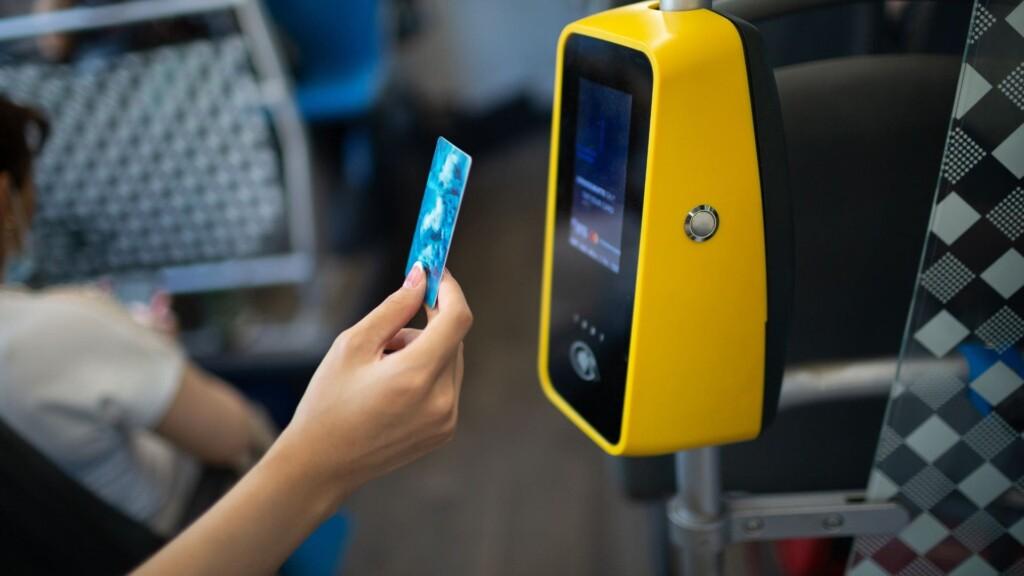
San Francisco public transportation is fast, affordable, and efficient, and can usually get you where you need to go. For those rare occasions when it can’t, you can use rideshare apps like Lyft or Uber, or even rent a bike.
Another way to get around San Francisco is on a sightseeing tour or riding the hop-on, hop-off bus. You’ll have less flexibility than with public transport, but it will take you directly to the tourist attractions on your checklist.
And remember, San Francisco is very walkable and many neighborhoods are best explored on foot. So whether you choose to ride through the city on a trolley, cruise across the Bay on a ferry, or take a self-guided walking tour, getting around is part of the adventure.
With so many ways to explore, you can tailor your journey to your style while enjoying everything the City by the Bay has to offer.
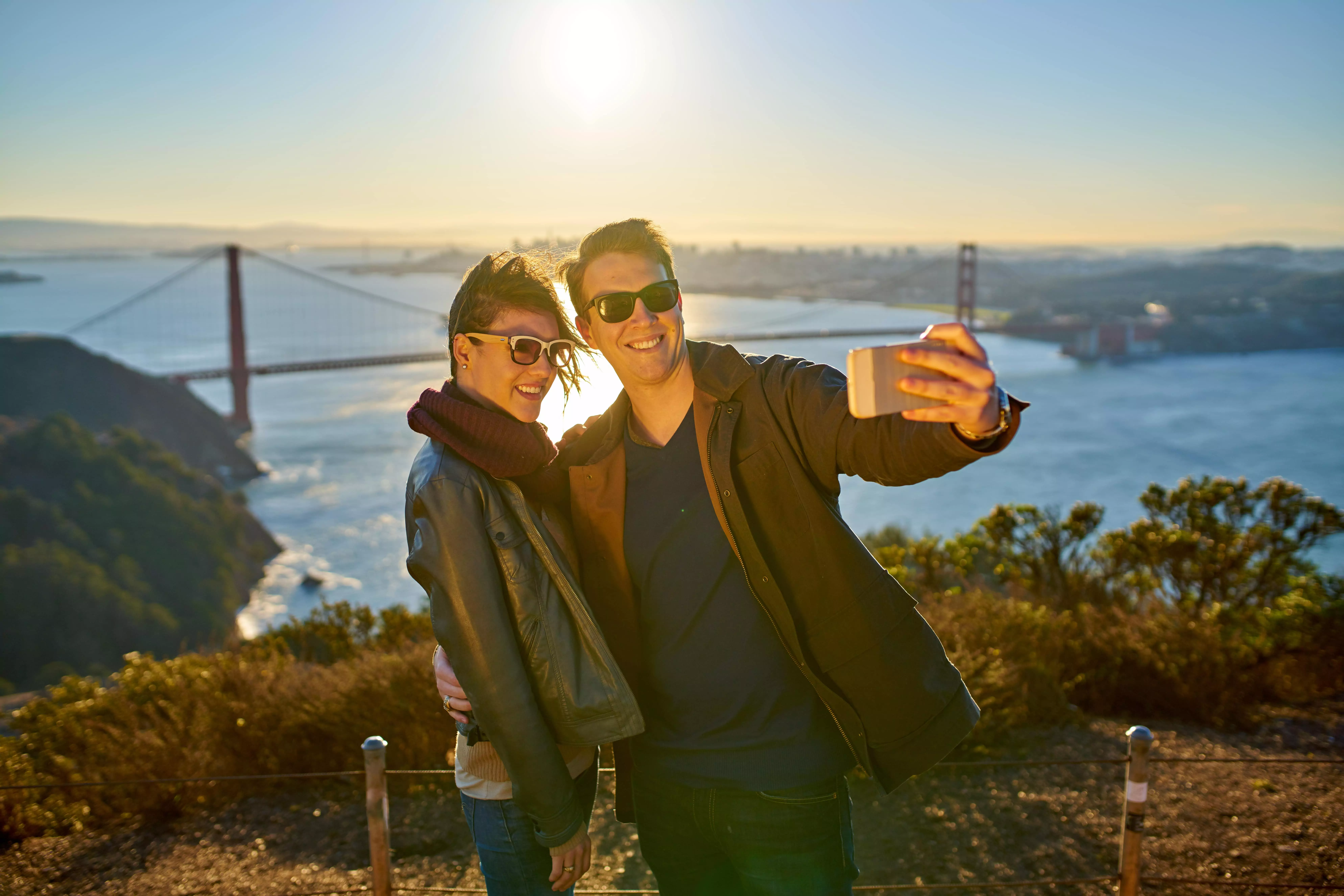
Morning Guided San Francisco Sightseeing Tour
Most complete and entertaining San Francisco city tour available. Stops to explore Golden Gate Bridge, Palace of Fine Arts, Land’s End, and Twin Peaks.
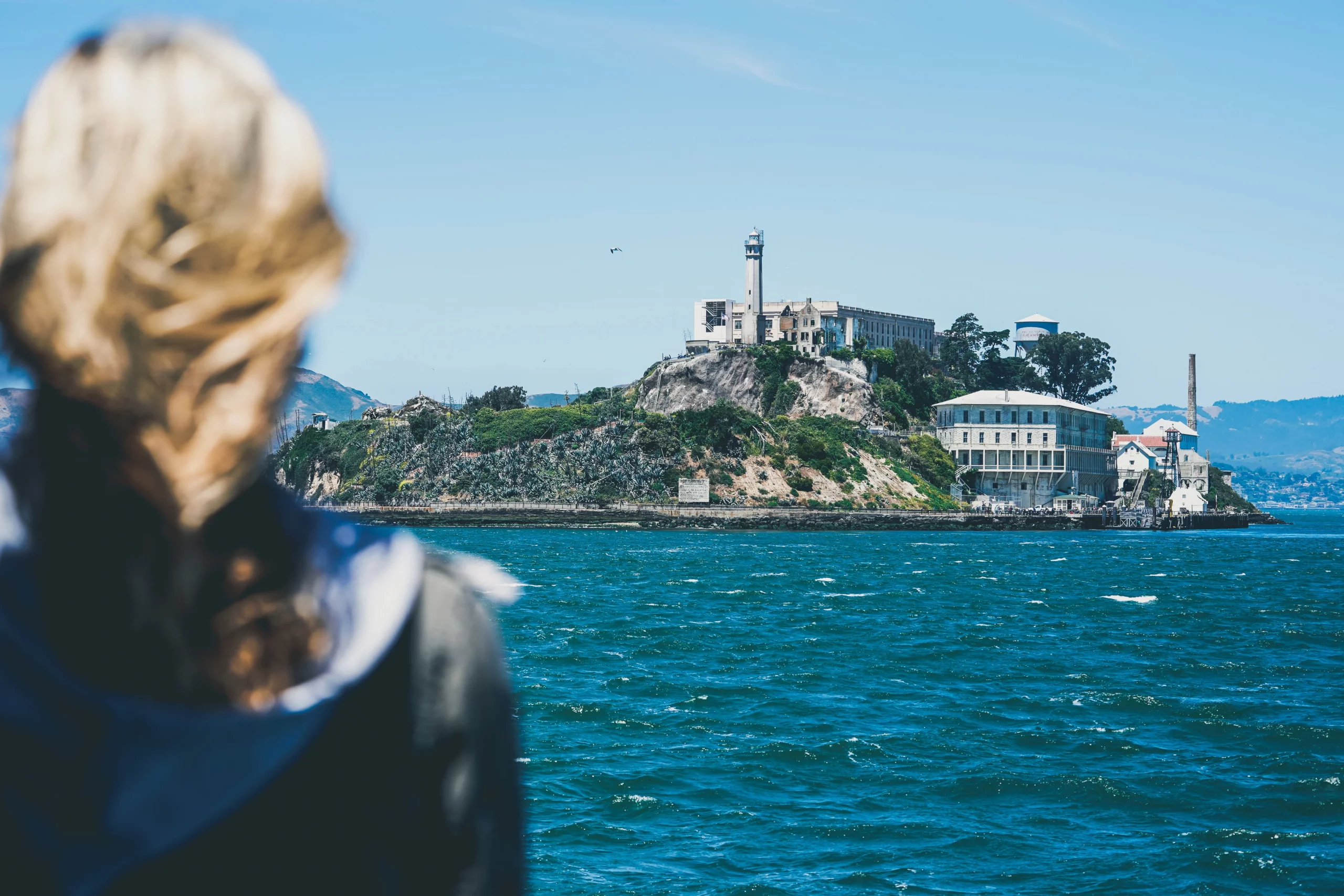
Guided Alcatraz and San Francisco City Tour
This full-day guided tour breaks you into Alcatraz and explores the Palace of Fine Arts, Golden Gate Bridge, Land’s End and Twin Peaks.
FAQs
Does San Francisco have good public transport?
Yes, San Francisco has a good public transport network, including trains, buses, and cable cars. It’s one of the most comprehensive networks in the U.S. However, some areas of San Francisco are easier to get to on public transport than others, and BART trains stop running at midnight.
Do you need a car in San Francisco?
No, you don’t need a car in San Francisco. Parking can be expensive and hard to find, so many visitors and residents rely on public transport. You can also use bikes, taxis, scooters, and rideshare apps.
How do you pay for public transport in San Francisco?
You can pay for public transport in San Francisco with cash, a Clipper Card, or the MuniMobile app. There are also Day and Visitor passes available. As of late 2025, you’ll be able to pay for BART using contactless card payments.
What is the cheapest way to get around San Francisco?
The cheapest way to get around San Francisco is to use public transport. If you need to go somewhere that isn’t easy to get to on public transport, you can book a tour, use a rideshare app, or simply walk.
What is the difference between BART and Muni?
Muni is run by the San Francisco Municipal Transportation Agency and is the local public transport network. BART stands for Bay Area Rapid Transit and connects San Francisco to other nearby cities, like Oakland and Berkeley.
Historic streetcars

Have you ever wanted to experience riding a nearly 100 year-old streetcar? Well, then San Francisco’s got another treat for you! Way back in 1979, San Francisco got its first historic cable car: a model-year 1954 tram from Hamburg, Germany. Nowadays, Muni’s got a fleet of over 40 historic streetcars, some of them built as far back as 1912!! Now these cars can’t be found anywhere else, or even everywhere in the City. The historic lines only run on 6 routes: F – Market, E – Embarcadero, PH – Powell/Hyde, PM – Powell/Mason, CA – California St, and the only numbered on, 39 – Coit Tower. The fare for these is the same as the main streetcar system: $3 for cash, and $2.50 if you’re paying with Clipper.
Ferries

Even though they’re not a way through San Francisco, the City’s ferries definitely deserve a mention. Ferries run between San Francisco and spots like Sausalito, Tiburon, and Oakland, offering amazing views along the way. If you’re interested in learning how to reach Muir Woods using ferry and bus from San Francisco, check out the video next. Fares usually range from $5 to $13 depending on the route, and yes, you can use a Clipper Card or grab a one-way ticket at the terminal. Make sure to bring some layers—it can get windy out on the bay!
Bonus – Free Presidio Shuttle: After telling you all the ways you can spend money on fares to get around the City, I can’t skip the freebies! The Presidio GO Shuttle offers free rides from Downtown SF to the Presidio daily, from 6 a.m. to 7 p.m., with a few stops downtown, and multiple stops around the Presidio. Whether you’re headed to Tunnel Tops Park for amazing Golden Gate views, the Walt Disney Family Museum, or a Sunday picnic, this shuttle gets you there—free and easy! I’ll link the route in the description.
Conclusion

In addition to all these transportation options, you can also grab a bike share, take a rideshare like Uber or Lyft, order a taxi, or even hop in a self-driving Waymo car!
Keep in mind, San Francisco is very walkable. The one thing I wouldn’t recommend is driving—it’s tough to find parking, and it can get expensive.
San Francisco offers a wealth of transportation options to suit every traveler’s needs. Whether you’re gliding through the city on a trolley bus, cruising across the bay on a ferry, or taking a stroll through its iconic neighborhoods, getting around is part of the adventure. With so many ways to explore, you can tailor your journey to your style while enjoying everything the City by the Bay has to offer. So grab your Clipper Card, hop on board, and let San Francisco take you places!

Morning Guided San Francisco Sightseeing Tour
Most complete and entertaining San Francisco city tour available. Stops to explore Golden Gate Bridge, Palace of Fine Arts, Land’s End, and Twin Peaks.

Guided Alcatraz and San Francisco City Tour
This full-day guided tour breaks you into Alcatraz and explores the Palace of Fine Arts, Golden Gate Bridge, Land’s End and Twin Peaks.
Gary Lillian is an advisor to Extranomical Tours which has led more than 10,000 guided tours in Northern California in the last 10 years. He is a graduate of Northwestern University, holds a master’s degree from Kellog Graduate School of Management, and is a recognized subject matter expert in marketing and customer experience engineering.
